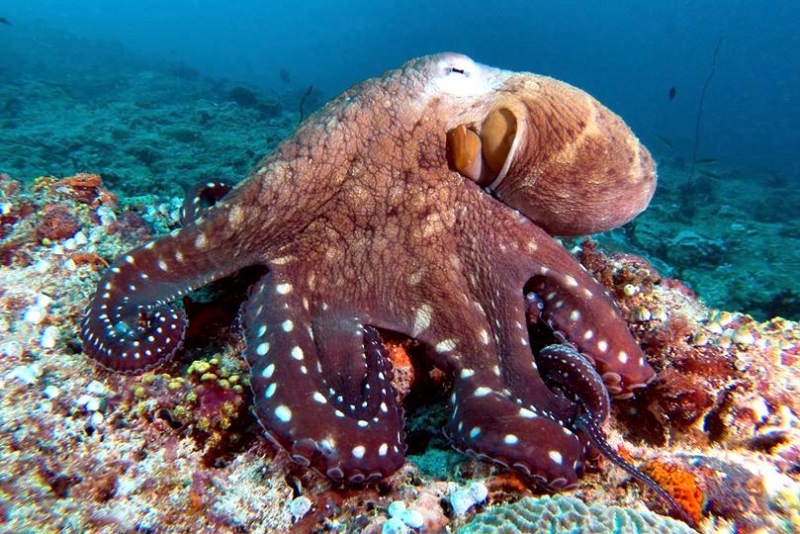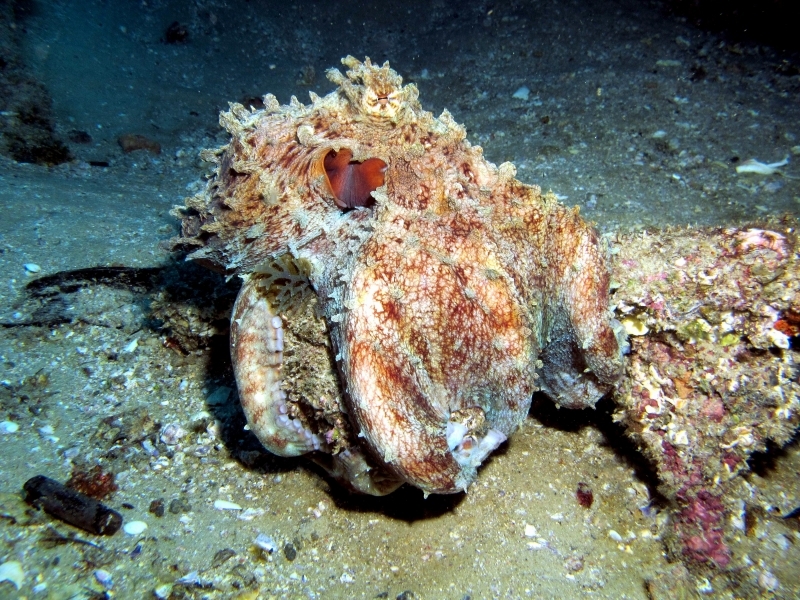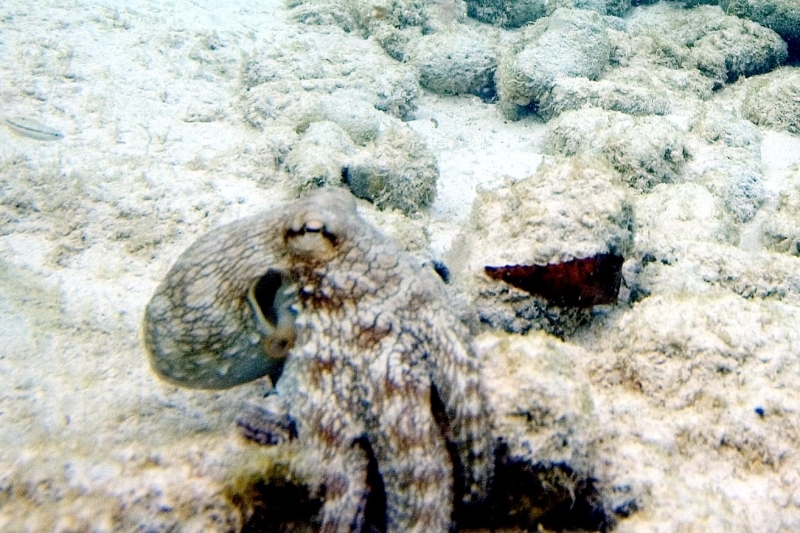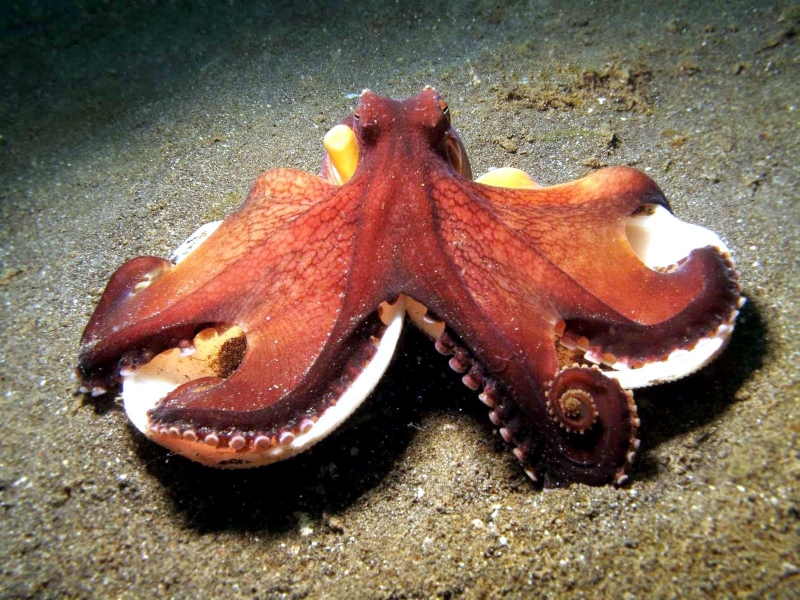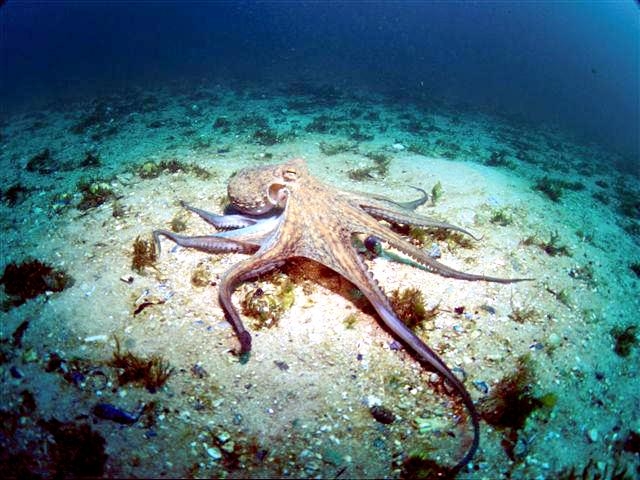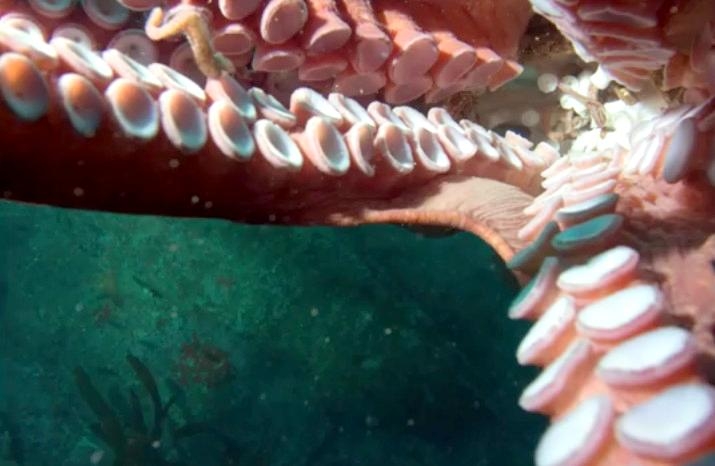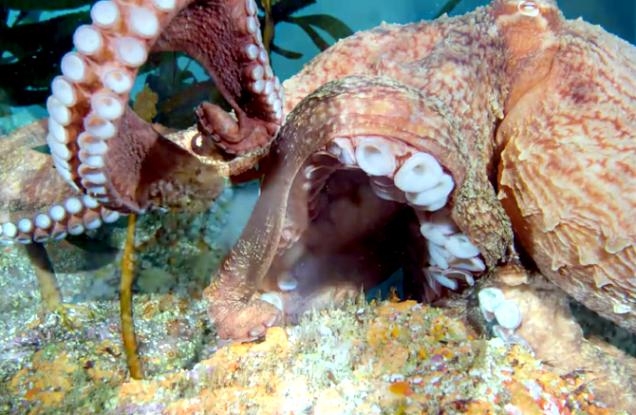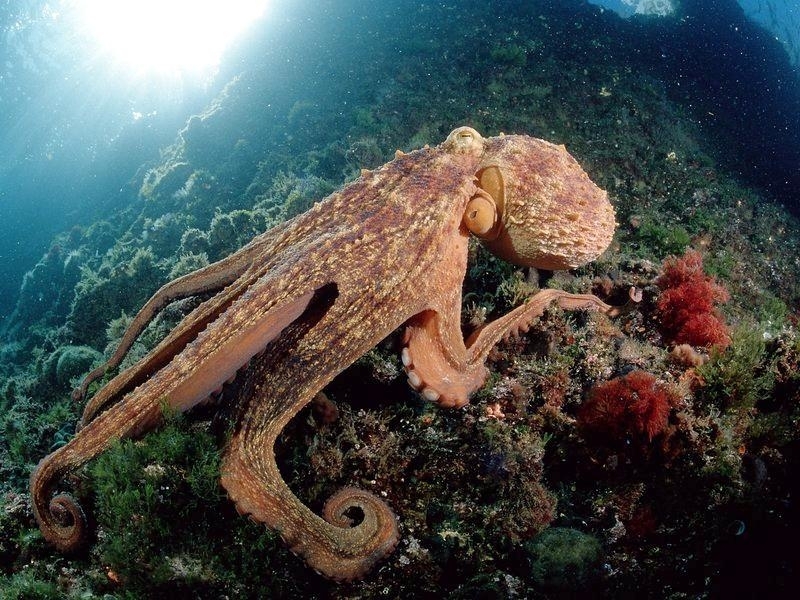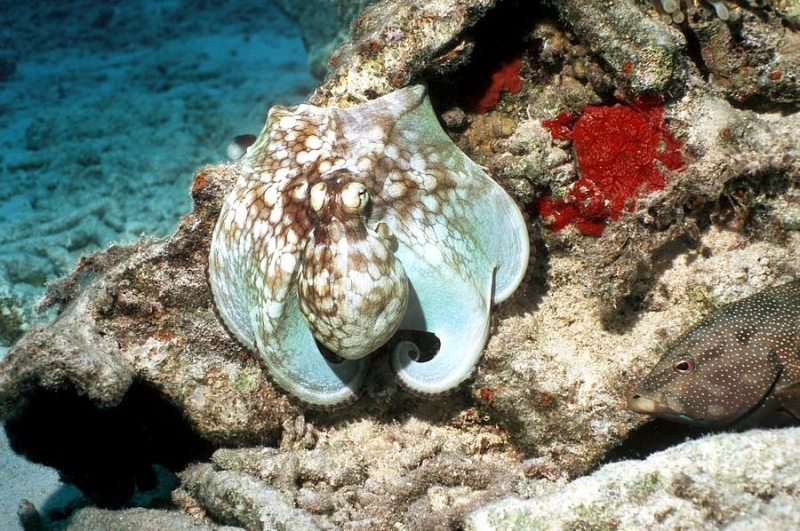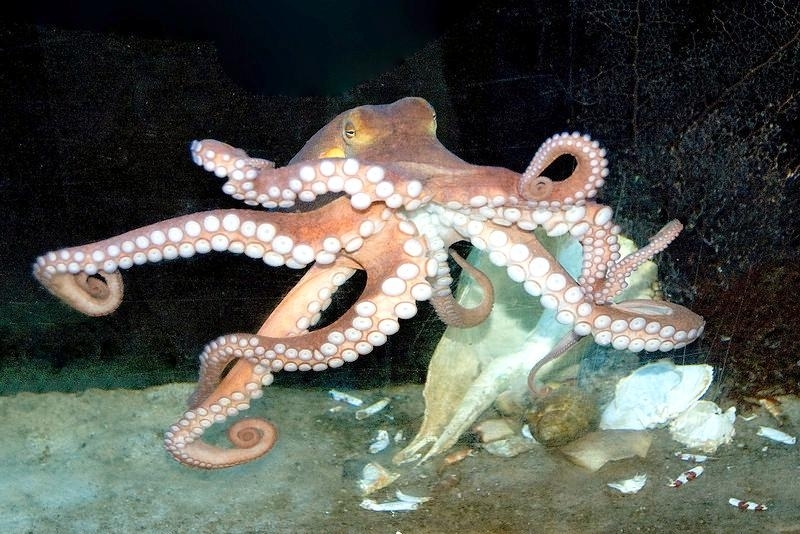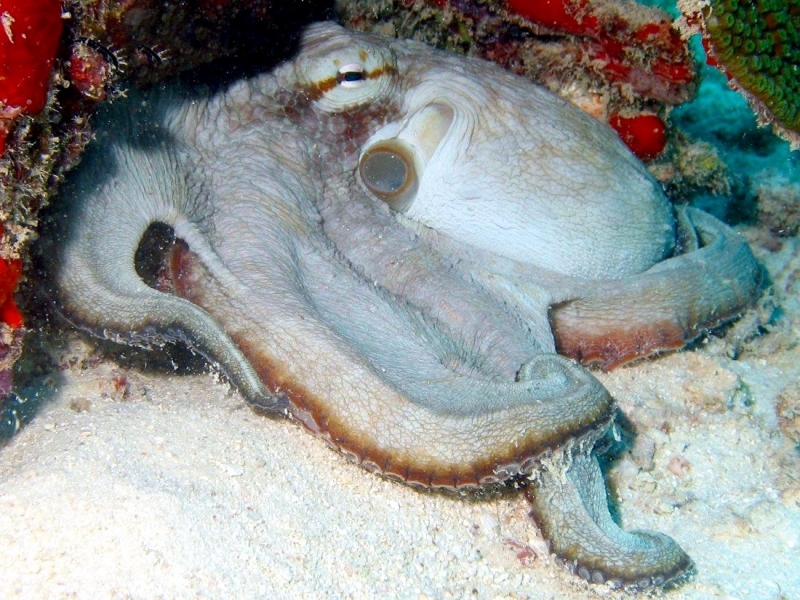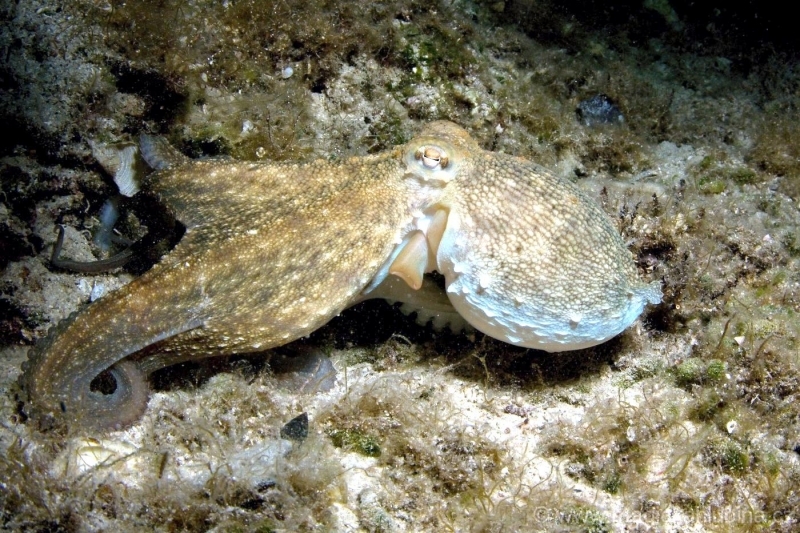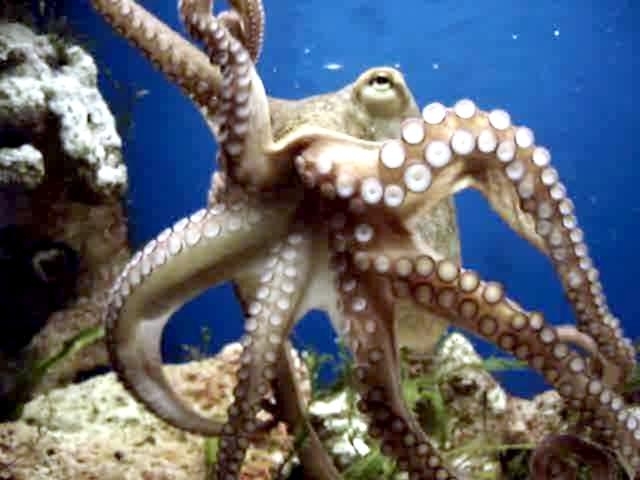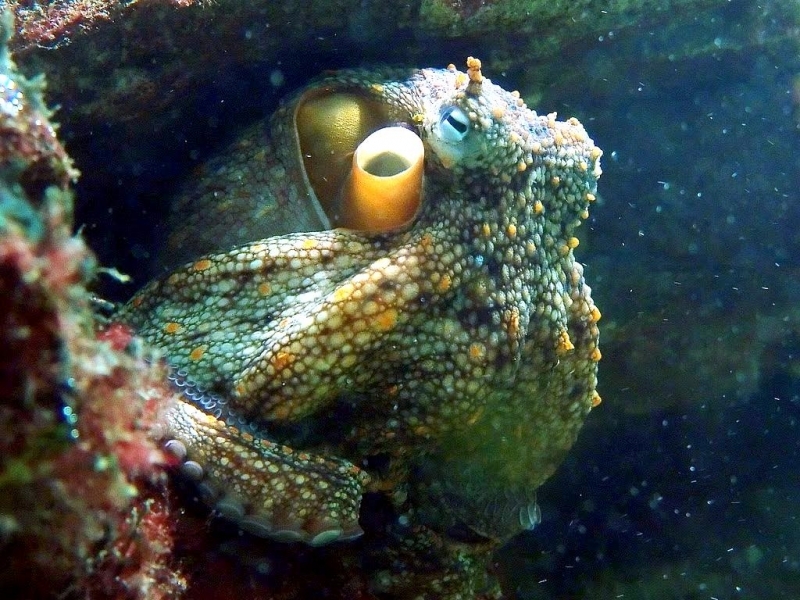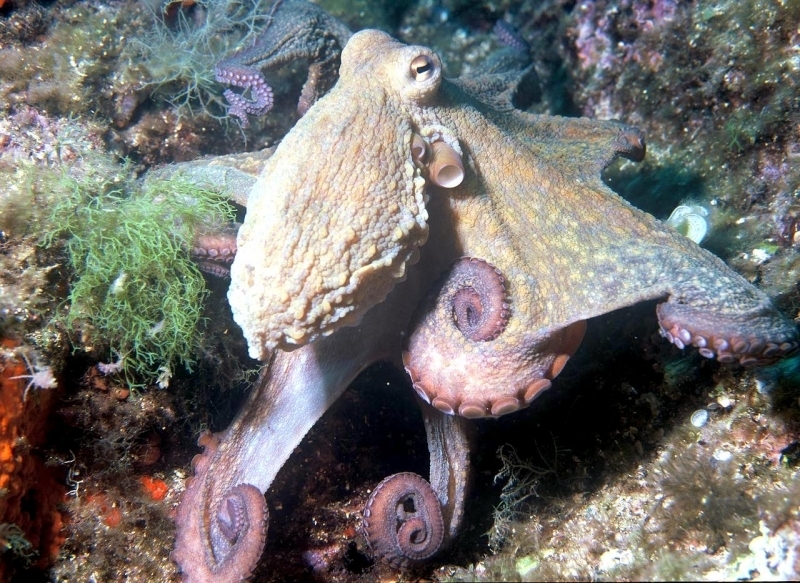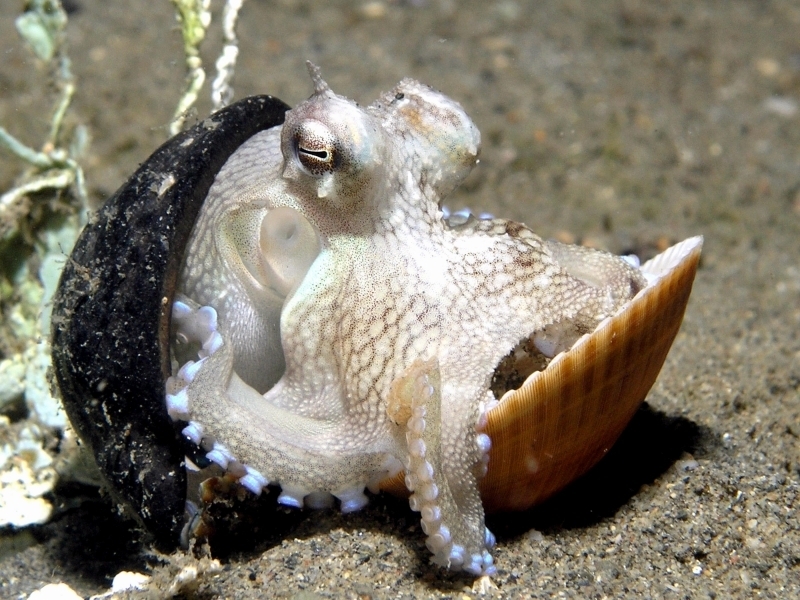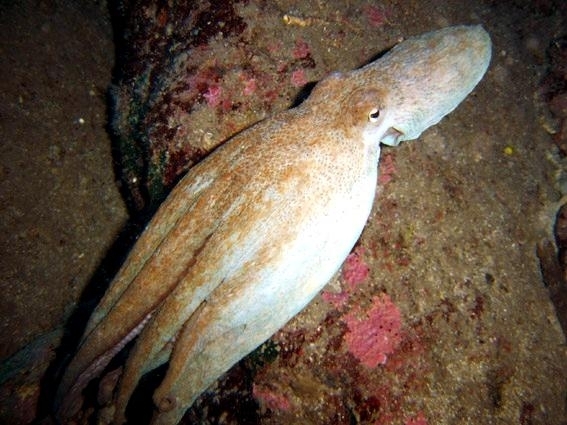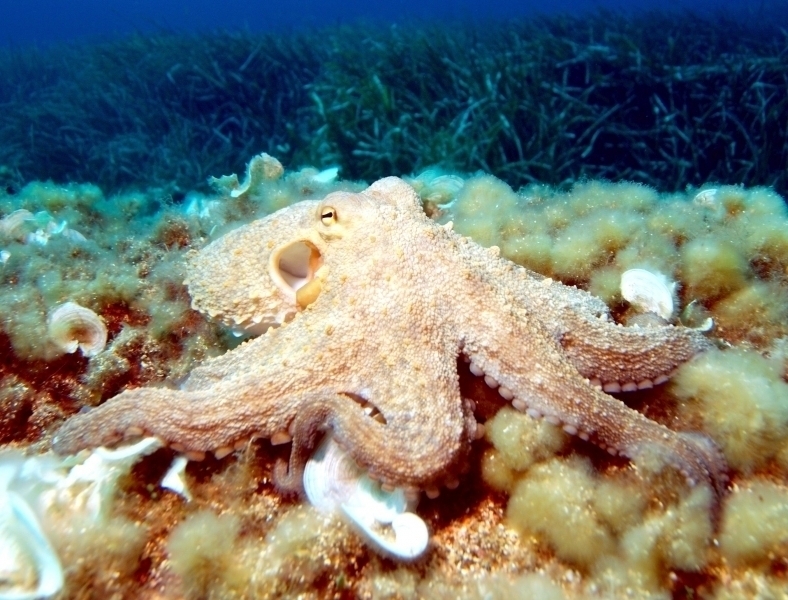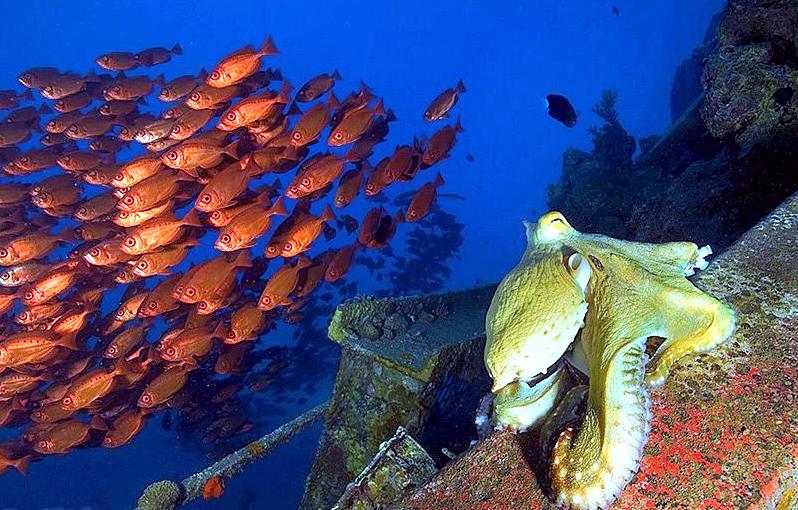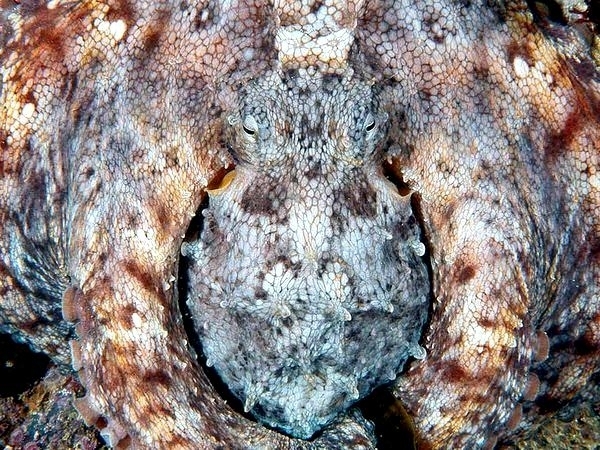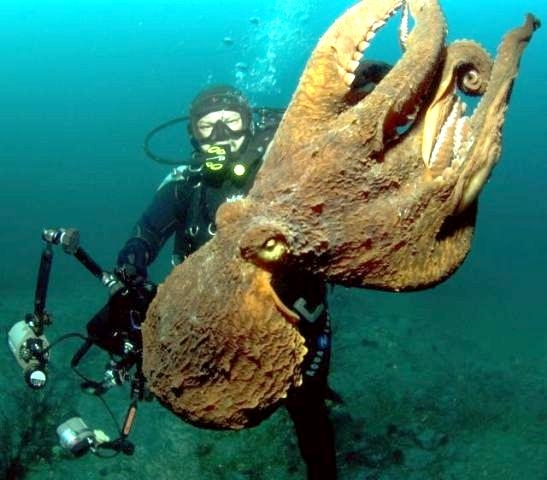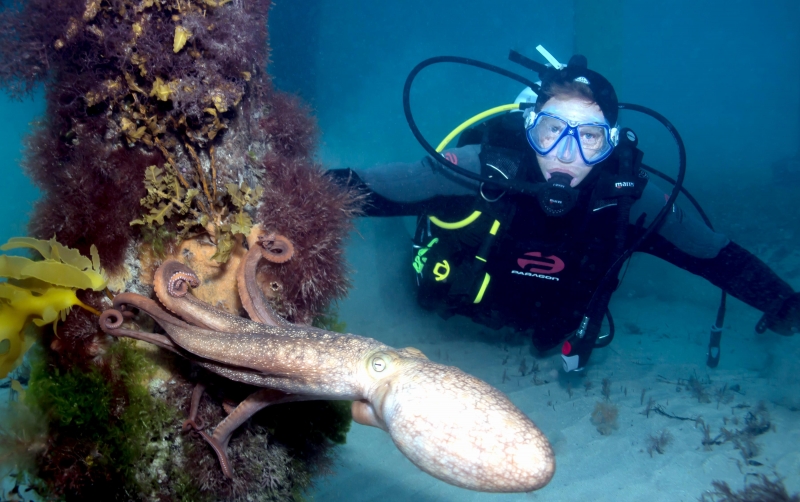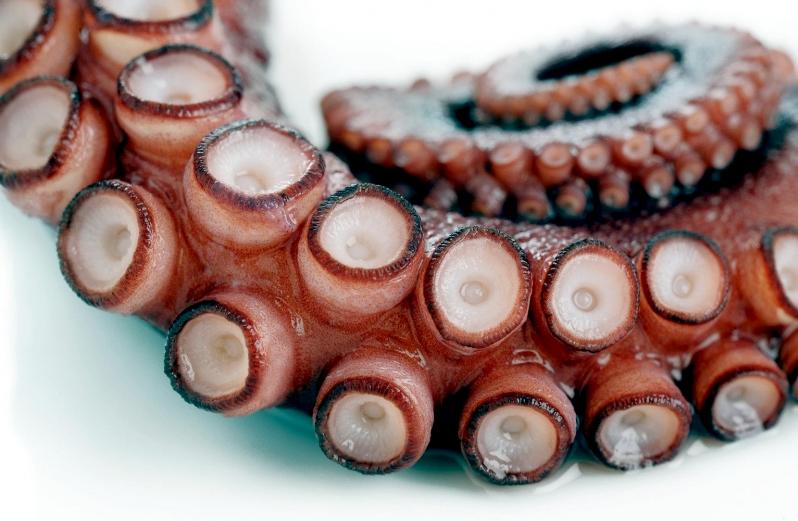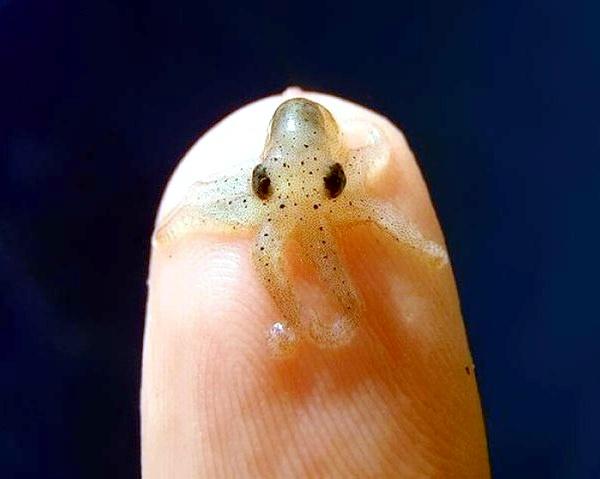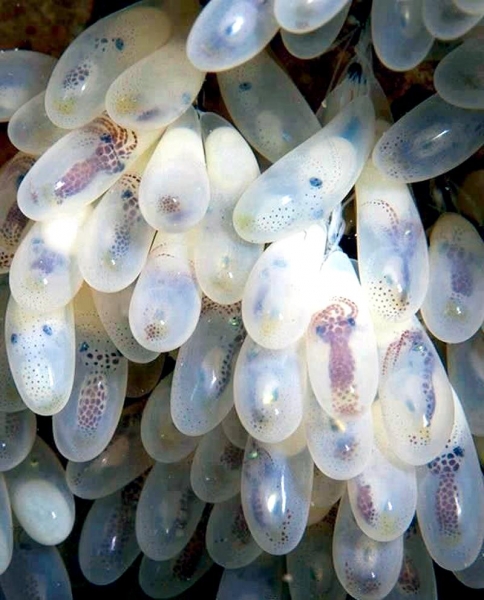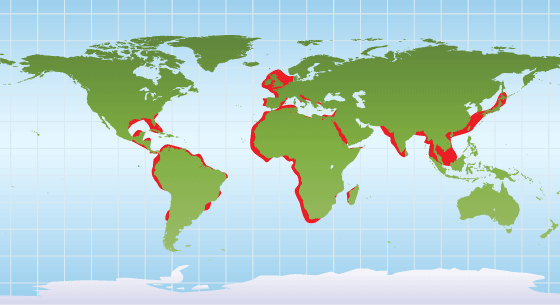“Octopus vulgaris”
The Common Octopus reaches 24–36 inches in length. The name Octopus came from the Greek okto (eight) and pous (foot). The arms are lined with suckers. The skin is smooth and has special pigment cells that make it possible for the octopus to blend in with the surroundings. These pigment cells have 3 bags filled with different colors which are adjusted until the background is matched. Coloration reflects the Common Octopus mood. White is for fear, red is for anger and brown is the usual color. Their closest relatives are the Chambered Nautilus, Cuttlefish and Squids. The Common Octopus is an active nocturnal predator that feeds mainly on crustaceans, fish and bivalves. They leave their dens at dusk to go for hunting trips and return at dawn. It happens that they search for food during the day, but those trips are of much shorter duration. New research have found that the Common Octopus actually stockpile food. On dives, researchers discovered piles of living bivalves around the burrows where the Common Octopus lives. They can then pick them up and bring them to their shelter whenever they are hungry. The Common Octopus is found world-wide in tropical, subtropical & temperate waters. It prefers coastal waters and can live both in the shallows and down to a depth of 500 feet. As tiny hatchlings, the Common Octopus becomes food for many other species of animals. There are also fisheries, which land 20,000 to 100,000 tons yearly. They are caught using “Octopus Pots”, plastic traps that the animal mistakes for a safe shelter. The Common Octopus is normally solitary & territorial. It finds a home in a cavity or digs a burrow for itself and leaves it only to feed or reproduce. They often protect and hide their homes with shells, stones and other solid things that they gather.
Common Octopus are perfectly adapted to live in very different habitats. They are experts at camouflaging themselves by changing their color, skin texture and posture. When they feel threatened, it usually changes its body color and tries to escape while releasing ink. This purple-black cloud confuses the enemy and may give the Common Octopus enough time to jet away to safety. The ink is toxic in high concentrations. In early spring, adults move closer to the shore for spawning. Common Octopus have separate sexes and fertilization is internal. A male and a female can mate with each other several times, but they may also mate with other individuals. Within 2 months after mating, the female releases up to 500,000 eggs. They are laid in shallow water and are always attached to a substrate. Crevices between rocks & coral reefs provide suitable shelter. On sandy or muddy bottom, eggs are laid in empty shells or in man-made objects such as cans, bottles or tires. The female Common Octopus cares for the eggs by gently cleaning them with her suckers and provides them with oxygen by squirting them with streams of water. She also defends them from predators until they hatch. The time that it takes for the embryo to develop, depends on the temperature & size of the egg. Soon after the eggs have hatched, the female dies. The tiny hatchlings are carried about in water currents where they feed from plankton. After about a month, they settle to the bottom where only 1 to 3 out of 200,000 hatchlings survive to adult stage. They have the most complex brain of all the invertebrates. Just like vertebrates, the Common Octopus have long-term & short-term memories. They learn to solve problems by trial-and-error and experience. Once they have solved a problem, they remember and can easily solve it. Its eyesight is comparable to that of a human. Focusing is done by moving the lens in & out, rather than by changing its shape as the human eye does but the Common Octopus does not rely solely on its eyes to investigate its surroundings. They also have an acute sense of touch in the suckers. A blind Common Octopus can tell the difference between different objects just as well as a seeing one.
